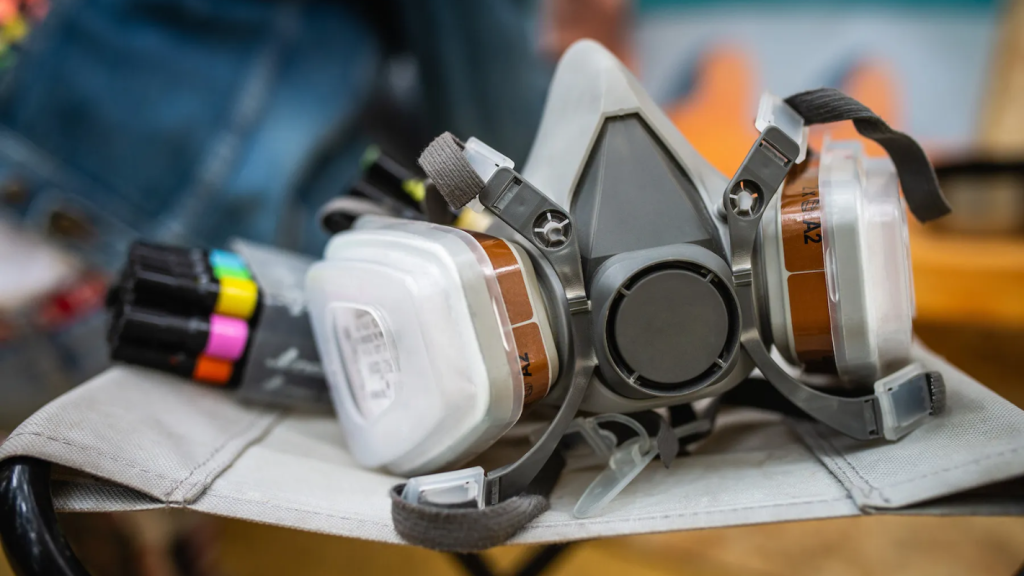Ensuring the safety of workers is crucial in industrial environments because they are exposed to a variety of airborne risks, including dust, fumes, chemicals, and infections. One piece of vital personal protective equipment (PPE) that protects workers from hazardous material inhalation is a respirator. This blog post examines the vital role respirators play in improving industrial safety and the healthier, more productive work environment they foster.
The Importance of Respirators in Industrial Settings
- Protection Against Airborne Contaminants
- Filtering Harmful Particles: Respirators are designed to filter out airborne contaminants, including dust, allergens, and particulate matter. This is particularly important in industries like construction, mining, and manufacturing, where workers are regularly exposed to these hazards.
- Chemical Protection: In industries that handle chemicals, respirators provide protection against toxic vapors, gases, and fumes. They prevent the inhalation of harmful substances that could cause respiratory issues or long-term health effects.
- Reducing Health Risks and Enhancing Worker Safety
- Preventing Respiratory Diseases: Long-term exposure to airborne contaminants can lead to respiratory diseases such as asthma, chronic bronchitis, and even lung cancer. By using respirators, workers are shielded from these risks, contributing to their overall health and well-being.
- Compliance with Safety Regulations: Many industrial environments are subject to stringent safety regulations and standards regarding air quality and worker protection. Respirators help companies comply with these regulations, reducing the risk of legal penalties and ensuring a safer workplace.
- Improving Worker Productivity and Comfort
- Maintaining Productivity: By protecting workers from respiratory hazards, respirators help reduce the incidence of illness and absenteeism. This, in turn, maintains productivity levels and minimizes disruptions to work processes.
- Enhanced Comfort: Modern respirators are designed with comfort in mind, featuring adjustable straps, lightweight materials, and ergonomic designs. This ensures that workers can wear them for extended periods without discomfort, leading to better compliance and effectiveness.
- Types of Respirators and Their Applications
- Disposable Respirators: Often used for short-term protection against dust and non-toxic particulates. They are ideal for tasks such as sanding or grinding.
- Reusable Respirators: Equipped with replaceable filters, these are used for long-term protection against a range of contaminants. They are suitable for environments with constant exposure to hazardous substances.
- Powered Air-Purifying Respirators (PAPRs): These respirators use a battery-powered blower to provide a constant flow of filtered air, offering enhanced comfort and protection for workers in high-risk environments.
- Proper Use and Maintenance of Respirators
- Fit Testing: Ensuring that respirators fit properly is crucial for effective protection. Fit testing helps verify that the respirator forms a secure seal around the face, preventing contaminants from leaking in.
- Regular Maintenance: Proper maintenance and care of respirators, including cleaning and replacing filters, are essential for their longevity and effectiveness. Regular inspections and adherence to manufacturer guidelines help ensure that respirators continue to provide reliable protection.
- Training and Awareness
- Educating Workers: Providing training on the correct use of respirators, including how to wear, remove, and maintain them, is vital for maximizing their effectiveness. Training programs should also cover the importance of respirators and the potential risks of not using them.
- Promoting Awareness: Raising awareness about respiratory hazards and the benefits of respirators helps create a safety-conscious culture within the workplace, encouraging workers to prioritize their health and safety.
Conclusion
In industrial settings, respirators are vital for safety since they provide vital defense against airborne pollutants and lower the possibility of respiratory illnesses. Respirators help create a safer and healthier work environment by efficiently filtering out dangerous particles and chemicals. This also increases worker productivity and adherence to safety rules. In order to guarantee that respirators fulfill their full potential and provide efficient worker protection, proper usage, maintenance, and training are essential. Purchasing top-notch respirators and putting in place thorough safety procedures are essential measures in preserving a secure and effective industrial environment.



